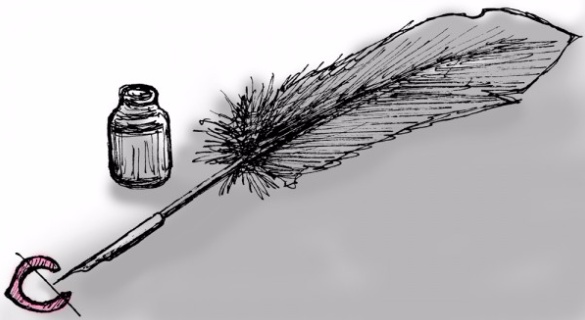
By Ed Rice, Special to the Bangor Daily News
While it’s admirable — and I’m completely sarcastic here — that the Cleveland Indians organization sought feedback from its fan base on the controversial issue of its racist mascot, Chief Wahoo, and has started 2014 by implementing a partial end to its use, wouldn’t it finally be considerate of the team to seek the blessing of the Penobscot Nation for even part-time use?
This is comparable to a group deciding, “Hey, it’s OK to use the swastika just on the home jerseys and caps and just in the gift shop” to continue making money on merchandise. The simple problem here is that when something is offensive, it’s completely offensive, not just a tad offensive. And, as it happens, this action remains a complete middle-finger- in-the- air to Maine’s Penobscot Nation.
Even the newly minted collegiate football champions of 2013, the Florida State Seminoles, have their nickname and mascot somewhat “sanctioned” by the Seminole tribe.
So, why should the Cleveland Indians seek out the Penobscots?
The original nickname “Indians,” officially adopted in 1915, owes to Penobscot Nation tribesman Louis Francis Sockalexis, who played with the then-Cleveland Spiders from 1897-99.
Sockalexis, a Penobscot from the Indian Island reserve on the Penobscot River near Old Town, was the sensation of professional baseball for three incredible months in 1897. Sockalexis was the first known Native American to play Major League baseball, was the undeniable inspiration for the team’s nickname, and endured horrific Jackie Robinson- style racial prejudice 50 years before Robinson that goes completely unrecognized today.
I am the author of “Baseball’s First Indian,” a biography of Sockalexis I patiently wrote over the course of 18 years of part-time research and published in 2003. I’m also the individual who, in 1999, corrected the bevy of errors in the biography of Sockalexis that annually appears in the Cleveland Indians’ media guide, receiving the gratitude of Robert DiBiasio, the team’s long-time vice president of public affairs.
Sadly, Sockalexis is barely a footnote in Major League baseball history. But what is equally bad is that he is barely recognized in the city of Cleveland — just enough to justify the use of the nickname “Indians” and the mascot “Chief Wahoo.”
It’s clear to just about everyone who isn’t a Cleveland Indians fan that Chief Wahoo offers no honor, no respect whatsoever to Sockalexis, who died in 1913. Chief Wahoo only dates back to the late 1940s, when a young man sketched the crudest of American Indian images (some liken the original caricature — fairly — to the one Nazis used of Jews in their 1930s propaganda). Further, the original, vulgar design found acceptance in the late 1940s to early 1950s in an era when racial bigotry was a practical fact of life in U.S. society. Indeed, Native Americans were depicted as “raping, murdering savages” on American television and in American films and acceptably “killed” by the hundreds for our viewing enjoyment for years and years in those decades.
DiBiasio, who has worked for the Indians for more than 30 years, has a mantra defending the use of the caricature that states “something cannot be demeaned if there is no intent to demean.” The reasoning goes: The Cleveland baseball club has no intention of showing disrespect or demeaning Native Americans through the use of Chief Wahoo; therefore, no Native American is entitled to feel insulted by its use.
So, how does the Penobscot Nation feel about this? Well, actually, the Cleveland team already knows.
In 2000, the Penobscot Indian Nation Council sent the Cleveland Indians organization a resolution, asking the team to cease and desist from using the symbol Chief Wahoo to represent the nickname “Indians,” which the team proudly acknowledges in its literature was inspired by Sockalexis.
The resolution was ignored.
When I visited then-Jacobs Field and presented DiBiasio a signed copy of my book in August 2003, I also presented him with a copy of that Penobscot resolution. Again, the Penobscot Nation was ignored, as it has been to this very day.
I guess the words “respect” and “honor” have a different meaning in the city of Cleveland now than they had in the days of Larry Doby, when Cleveland welcomed the first African-American to play in the American League, and Carl Stokes, when Cleveland elected the first African-American to become mayor of a major American city.
I’ve now learned there is something worse than being told “yes” or “no” — something that is the worst kind of disrespect: being ignored.